Headache is caused by a disorder of the nervous system, which can be triggered by various factors. Reasons why the back of the head hurts a lot, therefore, the treatment of conditions depends on the root cause and the provoking factor.
Record content:
-
1 Varieties of pain
- 1.1 Strong
- 1.2 Sharp
- 1.3 Pulsating
- 1.4 Constant
- 1.5 With nausea
- 1.6 With dizziness
- 1.7 Shooting
- 1.8 Oppressive
- 2 Why does the back of the head hurt with diseases of the spine?
- 3 Diseases of the brain and blood vessels
- 4 Other reasons
- 5 What to do with back pain?
- 6 Drugs
- 7 Shants Collar
- 8 Traditional treatment
- 9 Neck Pain Video
Varieties of pain
One of the most common causes of headache is primary pain associated with a migraine or cluster headache. But at the same time, there are many other secondary symptomatic factors that cause this condition. The most common are overuse or mismanagement of drugs or head injuries.
The occipital part of the head hurts (causes and treatment are interrelated indicators, therapy is prescribed only after establishing the root cause of pain) in almost 90% of all patients who applied to therapist. In this case, a headache in most cases is considered something insignificant and frivolous.
Many people prefer to drink an analgesic on their own and thereby drown out the unpleasant sensations. Although, before making hasty conclusions with a diagnosis and starting self-medication, you should find out the specific cause of the condition and undergo a full examination. Moreover, if pains appear with a regular frequency, while an increase in its intensity is noticed.
Headache in its diversity is unmatched, it can be:
- long-lasting;
- growing;
- aching;
- stabbing;
- cutting;
- paroxysmal.
Attacks can be single or appear regularly, pain sometimes covers only a certain part of the head, and can radiate throughout its entire area. Headaches occur, as a rule, against the background of damage to the vessels of the brain, which in turn is provoked by many different reasons.
One of the first is migraine. A pathological condition is diagnosed in 12% of all cases. The condition most often appears in young women who react vividly to any stimulus (smell, physical fatigue, mental overexertion, alcohol consumption, smoking, stress, rush and other).
By the nature and intensity of pain, you can determine the pathological cause of its appearance.
Strong
A headache of severe intensity indicates the presence of such pathological processes as migraine, surges in blood pressure, sinusitis, complex infectious processes or TBI (cranial injury).  As the painful process progresses, the pain will only increase, which indicates serious violations of the body's functionality.
As the painful process progresses, the pain will only increase, which indicates serious violations of the body's functionality.
Sharp
If the pain appears abruptly, suddenly, this may indicate spasm of the vessels of the brain, which often appears in hypertensive crisis or cervical osteochondrosis.
Such problems are dangerous for a person with the development of vascular catastrophes such as rupture of an aneurysm or intracranial hemorrhage. Also, stressful situations, strong nervous shock, the use of unhealthy foods, as well as the irrational use of certain medicinal funds.
Pulsating
This type of headache indicates a migraine, however, similar sensations can also occur with other diseases. For example, otitis media, eye pathologies (in particular, glaucoma), sinusitis, dysfunction of blood vessels of the brain (for example, disorders of venous outflow or outflow of cerebrospinal fluid), as well as various infectious processes.
The localization of the pain syndrome and its duration determine the degree of danger to the body.
Constant
This nature of pain is the most dangerous, as it can mean the presence of complex pathological processes in the body.
These include:
- meningitis;
- disorders of the nervous system (encephalitis or arachnoiditis);

- syphilis, which, as it progresses, has a damaging effect on the nervous system;
- parasitic infections.
Another of the most dangerous assumptions may be a brain tumor. To find out the exact cause, you should undergo a full diagnosis.
With nausea
Nausea occurs, as a rule, with intense severe headache. This is a very alarming sign that can mean the development of migraine, meningitis, or a hypertensive crisis.
Also, similar symptoms can occur when:
- sinusitis;
- front;
- severe poisoning.
Headache and nausea are also a combination of signs of TBI and infectious processes, but in such situations, an additional symptom is high fever and general weakness.
With dizziness
The occipital part of the head hurts (the causes and treatment are interrelated, therefore, before prescribing medicines, a complete diagnosis) and dizziness appears - this is the cause of incorrectly selected lenses or glasses, it can also mean functional disorders vascular system.
Shooting
The shooting nature of pain (cranialgia) can appear suddenly, that a person does not even compare its occurrence with any provoking factor.
Shooting sensations in the head are often accompanied by the following manifestations:
- sudden appearance;
- intensity and intensification of pain when moving the eyeballs;
- the appearance of lumbago in the temporo-occipital region;
- often shooting pain is accompanied by vomiting and fever;
- lumbago in the ears.
The regularity of the appearance of these sensations affects the memory and intelligence of the patient. When performing any actions (chewing food, laughing or coughing), the patient feels a kind of blows and lumbago inside the head.
The reasons for these symptoms can be:
- osteochondrosis;
- protrusion;
- intervertebral hernia;
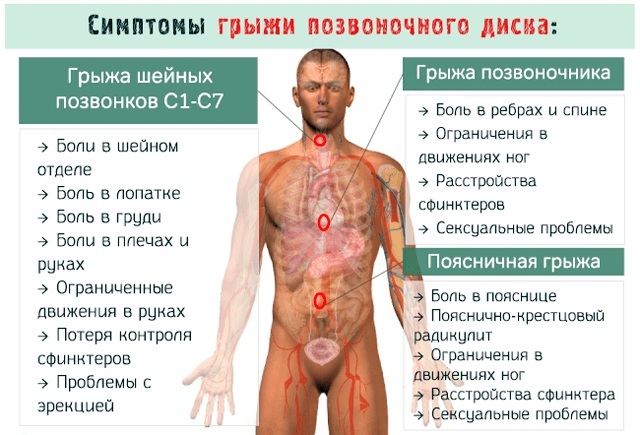
- cervical spondylosis;
- trigeminal neuritis;
- post-traumatic neuralgia.
Painful sensations are impulsive in nature, their duration is from 2 seconds and can last up to several minutes. Similar sensations can also occur with infectious inflammation of the organs of hearing and smell (sinusitis, sinusitis, otitis media).
Oppressive
Pressing pain can be compared with a tense headache, the patient feels a certain tightening sensation of the skull on both sides. A feeling of fullness and spasm appears in the eye area. A characteristic feature of seizures is low intensity, however, its duration is high - from 30 minutes. up to several days.
The causes of the appearance can be both primary factors and pathological secondary ones.
The primary ones are:
- stressful situations, anxiety;
- eye strain;
- improper posture;
- fatigue;
- malnutrition;
- bright light, in which you have to constantly squint;
- loud noise and pungent odors.
Primary causes, as a rule, are not pathological.
But secondary factors are often associated with a disease:
- inflammatory process of the temporal arteries;
- hypertension or hypertensive crisis.
Why does the back of the head hurt with diseases of the spine?
The occipital part of the head hurts (causes and treatment should be determined by a doctor, since sometimes a regular increase pain sensations may indicate complex pathological processes) mainly due to diseases spine.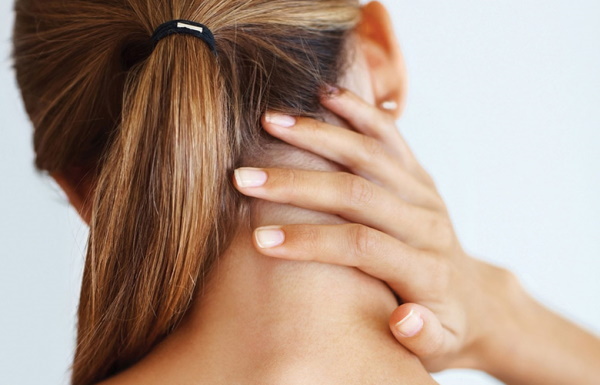
Very often, any headache is confused with migraine, trying to extinguish and alleviate the condition independently by taking analgesics. In fact, migraines are neurological disorders accompanied by regular intense pain attacks that occur mainly on one side of the hemisphere of the head.
Each person in his life at least once experienced discomfort from a headache, but only those who have an alarming symptom that are increasing or has a long-term character, when such a state begins to significantly change the usual way of life and negatively affect the functionality of everything organism.
And this is completely wrong, when symptoms appear, attention should be paid to the localization and nature of the painful manifestations. Occipital pains often indicate abnormalities in the spine. The cervical spine has many lymphatic, blood and nerve endings and clusters that are directly interconnected with the brain.
Damage, squeezing or dysfunction of these elements leads to occipital pain. That is why the treatment of such a condition is directly related to the treatment of diseases of the spine.
Spine diseases accompanied by pain in the back of the head:
| Disease | Description and manifestation |
| Schmorl's hernia | Nodular cartilaginous formations that provoke the sinking or pushing of the cartilaginous connective tissues of the spinal discs into the spongy structure of the skeleton. This pathology is often hereditary and begins to manifest itself in adolescence. The progression of the disease is asymptomatic, and this is the danger of early development of osteochondrosis.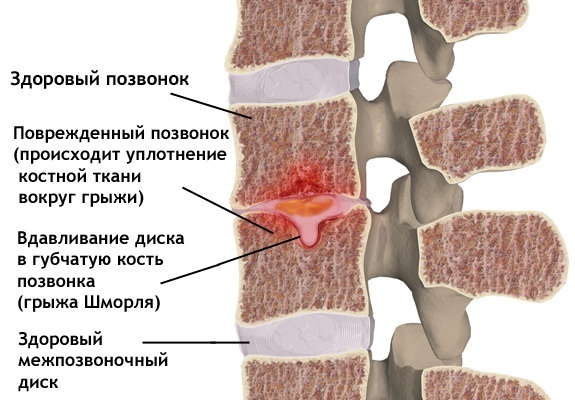 |
| Osteoporosis and osteochondrosis | These are age-related degenerative changes in cartilage tissues, which provoke thinning of the intervertebral discs and a loss of their elasticity. In osteoporosis, the structure is not disturbed by the discs themselves, but by the vertebral body and bone structure. There is fragility of the skeleton and a high risk of compression fractures. As a result, there is a decrease in the spinal column with damage to the vessels of the brain, nerve endings and the lining of the spinal cord. The headache that occurs with such changes is rarely relieved after taking even strong analgesics. |
Spinal injuries also lead to pain in the occipital head. The main reason for their occurrence is the infringement of the nerve endings that send signals to the brain.
Diseases of the brain and blood vessels
The occipital part of the head hurts (the causes and treatment are determined only by the attending physician, since self-medication often leads to serious consequences and even death) also due to diseases of the brain and vessels.
Such pain, as a rule, is of a pulsating nature and is localized in the temporal part or the back of the head. The result of such pain is vasospasm and impaired blood circulation, and this is also an expansion of the venous pathways due to insufficient outflow of blood.
Causes of vascular headache:
- hypertension;
- hypotension;
- thrombosis;
- temporal arteritis.
Each of the vascular pathologies predetermines the nature of the headache. It is noted that high intracranial pressure is accompanied by compressive pain that appears in the morning hours, which intensifies with any movement.
With arthritis, pulsating pain of acute intensity appears in the temporal region, almost always radiating to the neck and shoulders. These sensations are enhanced by chewing food.
Other reasons
Statistics from the World Health Organization notes that 50-70% of the country's adult population suffers from headaches of various kinds. Most do not even pay attention to its existence, suppressing its intensity with analgesics.
Pain sensations are different, and their nature may indicate a particular pathology. Pain can be an independent pathology or be a sign of a disease. If this is the result of a pathological process, then the problem is secondary.
Secondary causes of headache:
| Cause | Description |
| Encephalitis | Inflammatory process in the brain. It should be understood that the cause is not always an encephalitis tick, the causative agents can also be the herpes virus, microbes, vaccines (rare cases). Symptoms are varied, depending on the localization of the lesion, the complexity of the inflammatory process and the body's response. The most common are: fever, gastrointestinal disorders, muscle tone disorder. |
| Tyramine action | Tyramine is a toxic element that causes migraines. The high content of the substance is noted in bananas, ham, avocado, bacon, and aromatic types of cheese. |
| Meningitis | This is an infectious disease of the brain, actively developing and accompanied by the following symptoms:
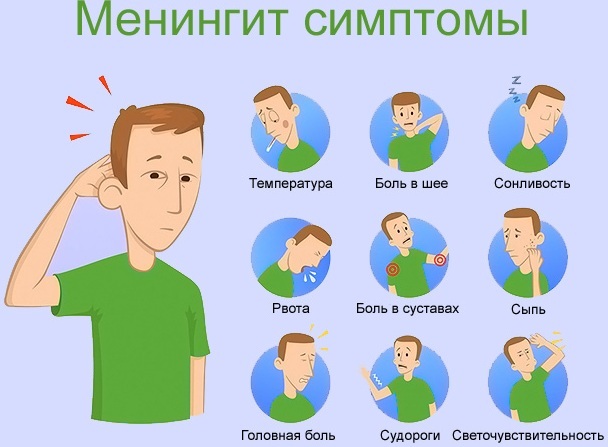 Treatment for meningitis is complex and lengthy. Patients are prescribed intravenous antibacterial drugs, which are most effective only in the early stages of the disease. |
| Temporal arthritis | In the inflammatory process, granulomas are formed, spreading along the vascular walls, as a result, their swelling occurs. The lumen of the arteries in the temples narrows, and pain occurs in this area. The accompanying signs are as follows:
|
| Glaucoma | With glaucoma, intraocular pressure rises, which causes atrophy of the optic nerve. Without therapy, the pathological process leads to loss of vision. Associated symptoms:
Such symptoms can be easily confused with an onset of a cold, therefore, to find out the exact cause, you should undergo an examination. |
What to do with back pain?
The occipital part of the head hurts often due to pathological reasons, it is important to recognize the problem in a timely manner and begin its treatment. This is the only way to avoid serious consequences by starting therapy in the early stages. To find out the reasons for the appearance of pain, the doctor prescribes a number of diagnostic measures.
This is:
-
EEG (electroencephalography). Evaluates the functionality of the brain, reveals abnormalities and vascular lesions, and also allows to determine the presence of tumor formations and hematomas in the early stages.
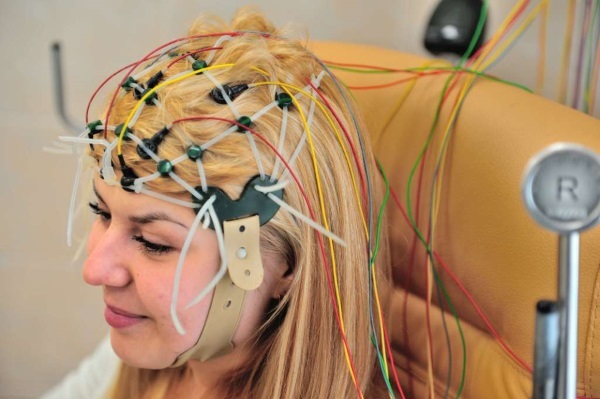
- Radiography. The procedure detects the presence of injuries, sinusitis and hydrocephalus.
- MRI. It is used to detect tumor processes, as well as circulatory disorders in the brain, both chronic and acute. In addition, foci-consequences of stroke, sinusitis and other vascular pathologies are determined.
- CT. Determines the presence of hemorrhages and changes in the structures of the brain. This method can also detect the presence of tumors, aneurysm, blood clots and atherosclerosis.
- EMG (electromyography). The diagnostic method is used to identify neuromuscular diseases.
- Ultrasound. One of the most basic studies, allowing in the early stages to determine the presence of atherosclerosis and other possible vascular pathologies. Including narrowing of the lumen of the arteries, violation of their course, aneurysm.
Laboratory tests are prescribed primarily to detect infectious inflammation, autoimmune changes and cholesterol metabolism failures in a patient.
Additionally, the patient is assigned consultations of such narrow-profile specialists as a dentist, ophthalmologist, otolaryngologist, neurologist.
Drugs
The most effective headache medications are:
-
Paracetamol. An analgesic non-steroidal anti-inflammatory drug that is often taken by patients with rare headaches.

- NSAIDs. These include: Ibuprofen, Diclofenac, Acetylsalicylic acid. The drugs have anti-inflammatory and analgesic effects.
- Combined analgesics. There are many varieties of these drugs, often based on a combination of NSAIDs, antispasmodics, caffeine and paracetamol. These include: Pentalgin, Citramon, Solpadein. Medicines are more effective and more pain relieving than pure medicines. However, their reception carries a great danger to the patient's health.
- Triptans. Drugs are prescribed only with a confirmed diagnosis of migraine. These include: Eletriptan, Sumatriptan, Eletrptan.
When taking any pain reliever, it should be remembered that all drugs that have a similar effect are dangerous to health, as they have a number of side effects. The average duration of treatment with "pure" drugs is 15 days, combined are recommended to be taken no more than 10 days.
Shants Collar
The Shants collar is used mainly for cervical osteochondrosis, which is accompanied by an intense headache in the occipital region. A correctly worn orthosis is considered if it lies tightly on the neck and a finger can be placed between the skin of the neck and the structure itself.
The bandage allows you to fix the cervical vertebra in one position for a certain time, which allows you to reduce the intensity of pain and eliminate the likelihood of complications. This tactic has practically no side effects and contraindications, it can be used in the treatment of even young children.
However, for all the benefits of the design, there are some contraindications:
- regular wearing of an orthosis provokes muscle tissue atrophy;
- the total time of wearing the bandage should not exceed 3 hours per day;
- when diagnosed with chronic osteochondrosis, the bandage is applied only before bedtime, which allows you to relieve muscle tone;
- Wearing the brace too tightly interferes with the normal functioning of the respiratory system.
Traditional treatment
Herbal medicine is one of the most effective remedies for headaches. For a long time, herbal teas and infusions have been used to relieve inflammation, swelling, and soreness. There are many medicinal plants that have a calming, antispasmodic, and analgesic effect.
The most common traditional medicine recipes:
- Chamomile tea. Has a wide spectrum of action, is able to relieve pain, spasms and calm the nervous system. In addition, this tea is effective for diseases of the stomach and intestines. Tea is brewed at the rate of 1 tbsp. l. dry chamomile in 300 ml of boiling water. The remedy is infused for 10-15 minutes, after which it is taken instead of tea 3-4 times a day.
-
Lemon balm tea. Effective for severe headaches and nervous disorders. Tea is brewed at the rate of 3 tbsp. l. herbs in 1 glass of boiling water. Infused for 10-15 minutes. and is taken orally. Sugar or honey can be added to improve the taste.
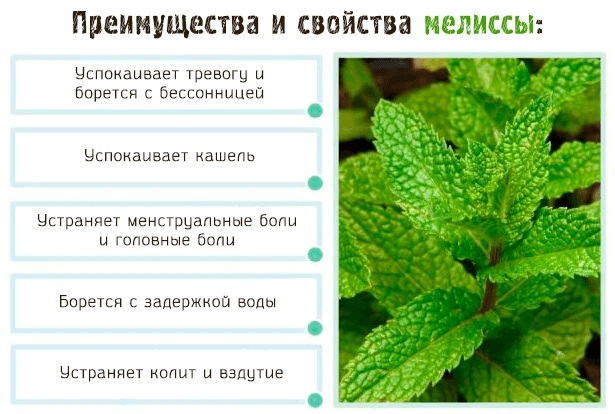
- Valerian root. Valerian herb has long been used as a sedative and pain reliever. To prepare the broth, 1 tbsp. l. dry crushed root of a plant, pour 1 glass of boiling water. The tool is infused for 10-15 minutes, after which, after straining, it is taken orally in 1 tbsp. l. 3-4 times a day.
Traditional medicine is rich in a variety of recipes to eliminate not only headache, but also soreness and discomfort in the abdomen before menstruation. Also, many recipes help to cope with inflammatory processes, which are accompanied by high fever and headache.
If the back of the head hurts, you should not rely on the fact that everything will go away by itself, especially when there is an increase in pain syndrome and an increase in its manifestations. Sometimes the reasons can be so serious that the treatment may no longer be effective, since such the condition may mean the development of tumor processes that require immediate diagnosis and therapy.
Neck Pain Video
Causes of headaches in the occiput area:



